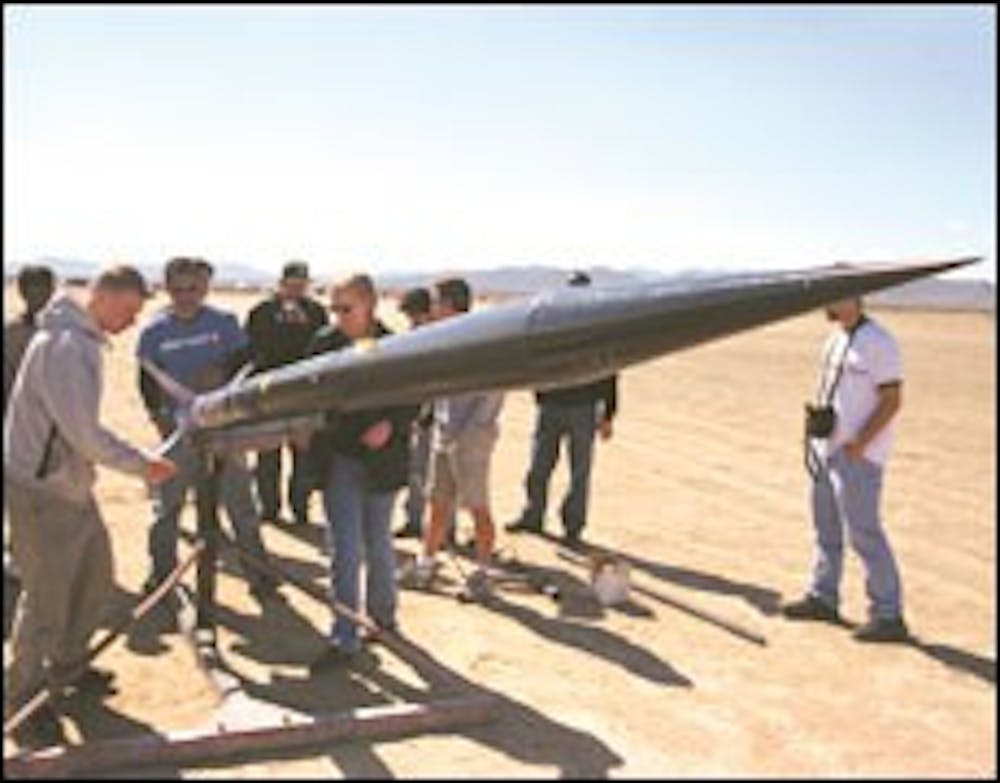No one shed a tear for Icarus I.
Shortly after 12:30 p.m. Saturday, 11 ASU aerospace engineering students watched as their cone-shaped, 14-foot rocket disintegrated thousands of feet above its launch site -- a barren, packed-dirt field in Goodyear, Ariz.
After a countdown, the students ignited the rocket. Orange, red and yellow flames shot from the bottom of the rocket, propelling Icarus I upward with a high-pitched roar, like a train accelerating in a tunnel.
About five seconds later, the body -- painted black with blue sky and white clouds at the base -- seemed to shred in mid-ascent, and the engine continued its parabolic flight, a trail of gray smoke following it.
Then, with a puff of dirt, the engine smashed into the Earth a couple hundred yards away.
After recovering some parts of the $1,400 rocket, Debbie Booze, an aerospace engineering sophomore, said "structural problems" might have caused the breakdown.
"It kind of folded over on itself -- the actual body," Booze said. "We're bummed out, but we're not going to cry about it."
Their goal was to launch the rocket to 10,000 feet.
Aerospace engineering sophomore Nalin Ratnayake added, "[Icarus I] had a good life, but we're working on something bigger."
The group already has begun work on Icarus II, which, if it succeeds, will be the first civilian team to break the space barrier, according to the group's Web site.
Using funding from private companies, the group plans to build a rocket that could travel up to 124 miles high and would cost upwards of $1 million.
Icarus II would be able to carry 110 pounds of scientific devices that would conduct research in a low-gravity setting.
But this launch was a steppingstone toward that one.
First, students and others involved in the group must become experts in rocket launching.
The Icarus Space Program was formed in September 2001 to give ASU aerospace engineering students a chance to apply their theoretical knowledge in practice.
At the same time, it exposes them to business realities, like attracting investors, said Chris Neilly, who helped found the group while he was an ASU student. He still is in charge of the team.
The group designed, built and successfully launched Icarus I several times in 2002.
As it ascended, Icarus I carried equipment that measured atmospheric pressures.
It did not carry any scientific payload this time, which is fortunate because the rocket splintered, Booze said.
Ratnayake summed up the group's general feeling.
"It's rocket science," he said. "A lot of stuff can go wrong."
For more information about the Icarus Space Program, visit their website.
Reach the reporter at ilan.brat@asu.edu.




